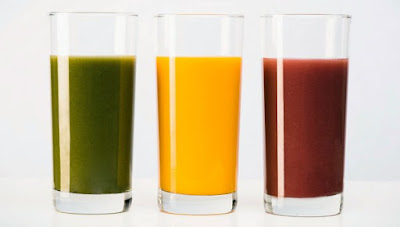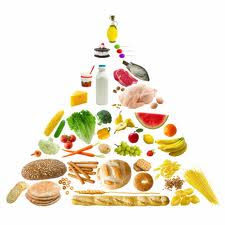Keeping the mouth awash
in certain liquids can be harmful
Newswise, February 21, 2016 — Liquid diets are all the
rage. We’re bombarded daily with advice on how juicing can cleanse the body,
the benefits of protein shakes as meal replacements, and even drinking tea to
keep sickness at bay. While liquid diets do have value, they can be destructive
to the teeth if you’re not careful.
“The biggest problem with liquid
diets is the act of bathing your teeth in a liquid all day—they can be
especially harmful if the liquid is acidic or has added or natural sugar,” said
Cherri Kading, R.D.H., M.S., director of clinical operations at Texas A&M
University Baylor College of Dentistry. “Tooth decay and erosion of tooth enamel
are the biggest concerns associated with liquid diets.”
Like the name suggests, a liquid diet is when the majority of a person’s calorie intake comes from drinking liquids. Some liquid diets are limited to fruit or vegetable juices, or even shakes that replace all of your meals. While many liquid diets are personal choices, some need medical supervision.
Certain liquid diets like juicing do
have related health benefits, but Kading emphasized some fruits are better than
others for your teeth. “Apples, pineapples and grapes have more sucrose than
fruits like berries and pears,” she said. “Fruits are good for us, but we need
to be mindful of how much sugar we’re exposing the mouth to.”
According to Kading, sugar and acids
are some of the leading culprits behind tooth decay.
“Sports drinks, soft drinks, and
even some fruit juices are extremely acidic,” she said. “If you drink these
chronically they can cause erosion, which is like a “melting away” of the
enamel. Sugar content in these drinks is troublesome, too, because sugar feeds
the bacteria that live on the teeth and eventually causes decalcification—the
beginning process of a cavity.”
The amount of liquid and how often
we drink it per day is also key. “We need to ask ourselves how often are we
drinking our tea, coffee or soft drinks,” Kading said.
“If you’re constantly sipping on
something that contains sugar or acid, your mouth never has time to recover
from the effects these ingredients may cause. Saliva is what neutralizes the
mouth, and it’s important to give the mouth a break from both acid and sugar so
the saliva can do its job.”
Worth noting, water is the only
liquid acceptable to sip all day. Kading stressed those who partake in liquid
diets should always be drinking water along with any other liquids. “If you’re
drinking water, this will help dilute, flush and cleanse the mouth,” she said.
If you’ve recently had oral or jaw
surgery, liquids may be your only nutrient option—at least for a little while.
Kading said health care professionals should always educate their patients on
the cavity process, so they understand why proper care of the teeth is
essential while on a liquid diet.
“You can’t just send the patient off
with a special toothbrush or floss and tell them to use it. You have to tell
them why it’s important,” she said. “If the patient doesn’t understand the
‘why’ behind proper oral care during a liquid diet, they are likely not to
stick with their oral care regimen. Patients need to know not to sip on acidic
drinks, to watch sugar intake and always rinse with water.”
But, don’t think liquid diets are
all bad for the mouth. “There can be some benefits to liquid diets,” Kading
said.
“One is that liquids wash over your
teeth and are easily rinsed out with water. The best way to approach a liquid
diet is drink your shake or juice, rinse with water and then be done with it.
The real harm lies in sipping on drinks and keeping your mouth awash in acids
and sugar all day.”
About Texas A&M Health Science
Center
Texas A&M Health Science Center is Transforming Health through innovative research, education and service in dentistry, medicine, nursing, pharmacy, public health and medical sciences. As an independent state agency and academic unit of Texas A&M University, the health science center serves the state through campuses in Bryan-College Station, Dallas, Temple, Houston, Round Rock, Kingsville, Corpus Christi and McAllen. Learn more at www.vitalrecord.tamhsc.edu or follow @TAMHSC on Twitter.







